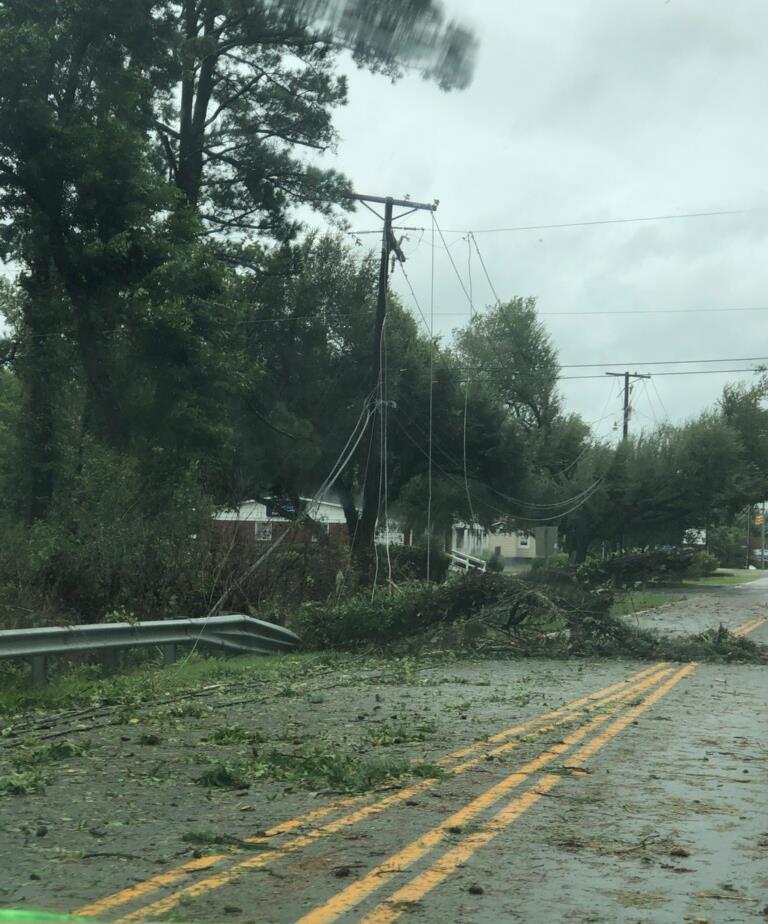After Storm Care Tips
11/19/2022 (Permalink)
Handling the Aftermath of a Storm
Your family has taken the necessary precautions during a storm, but what do you do to deal with the aftermath? There is a chance that something happened to your home, whether it be flooding, backed up sewage, or damage from fallen debris. If there’s any major damage to your home, it’s best to call the experts at SERVPRO of Southeast Summit/Lake Township and let the professionals clean up. But, there are still some things you can do yourself if you feel up to it.
- Clean up tree debris from your property. Picking up sticks and leaves is by far the easiest step, and is something even your kids and pets can get involved in. These materials can be discarded, or saved for firewood or composting. If a branch or tree has fallen against your house and caused damage, make sure you call SERVPRO of SE Summit/Lake Townshipto have it quickly, and expertly repaired.
- Dry out your house as soon as possible. Water that has entered your home, typically in a basement or attic, can lead to mold if left untreated. Mold can lead to severe property and health detriments, so it is important to get these areas dried as quickly as possible. If some time has passed and you suspect mold may already be growing, a bleach-based household cleaning solution can kill the mold and prevent further damage.
- If you see any damage involving sewage, live wires, or possible gas leaks, do not attempt to fix these things yourself. Leave these types of cleanups to the professionals at SERVPRO
If you feel unqualified or just need a helping hand, be sure to call in professionals to handle your after storm clean up.
What to do if Lightning Strikes
It’s one of those things that you hear about on a rare occasion, but you never think about it happening to you. The chances of your house or business being struck by lightning are basically zero, so why would you need to worry about it? Surprisingly, from 2017-2020, the Insurance Information Institute reported just over 311,000 claims for lightning, with an average cost of $28,885 per claim. Makes you want to worry about it a bit more, right? So, what do you need to do if lightning strikes your home or business?
- First, make sure that no one in your home or business was hurt. It’s a bad idea to do things like wash dishes or shower during a lightning storm, so try to avoid these practices when you know a storm is approaching. This could save you from injuries.
- Next, check for damage or a fire. As you do this, make sure to check everywhere from the attic to the basement looking for things like smoke, charred electrical outlets, sorted appliances, damaged roof shingles, or fried wiring.
- If you find any storm damage and need storm damage repair, then it’s best to contact the experts at SERVPRO of Southeast Summit/Lake Townshipto mitigate your lightning or storm damage. We’ll take care of everything, so you don’t have to worry.
Driving After a Storm
After a bad storm, driving may be the furthest thing from some people’s minds. But, if you were stuck at work during the storm, or just have somewhere to be, driving may be inevitable after a storm. It is important to understand the best tactics when driving post storm, especially if the streets are flooded. Here are a few things to remember if you find yourself driving on flooded streets.
Avoid Standing Water
When you have somewhere to be, driving through a flooded street may not seem like a big deal. “That’s the quickest route, I’ll be fine.” But, there can be dangers below the surface of flooded streets, such as:
- Branches or other debris
- Potholes or washed out pavement
- Moving water
It is hard to tell just how dangerous a flooded street may be, so don’t take the risk. Even a few inches can stall your vehicle or even move it off the road. Flood damage experts recommend that you find an alternate route or just wait until the water has a chance to drain. A few extra minutes on your trip is better than damage to your car.
Slow Down
A flooded street is not a racetrack. Even if the water is shallow enough to navigate, you still need to reduce your speed so that you don’t stall your vehicle or hydroplane. If your tires cause water to fan out to the side, you are probably going too fast to be safe.
Don’t Use Others as a Gauge
Just because other drivers make it through flooded roads, that doesn’t mean you should try it. Flood conditions change rapidly. The car in front of you could have inadvertently knocked some debris into your path that will tear up your vehicle. Their car may be able to withstand more than yours as well. It is important to use your best judgment and focus on your own driving, rather than someone else’s.
A flooded street is not meant to be a challenge. It’s better to turn around and find an alternate route, or wait until the water drains rather than risking your car or your own safety. Wherever you need to be would want you there later safely than not there at all due to flood damage.
If you experience storm damage and are in need of restoration following the next big storm, call SERVPRO of SE Summit County/Lake Township today: 330-786-0505






 24/7 Emergency Service
24/7 Emergency Service
